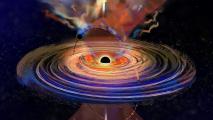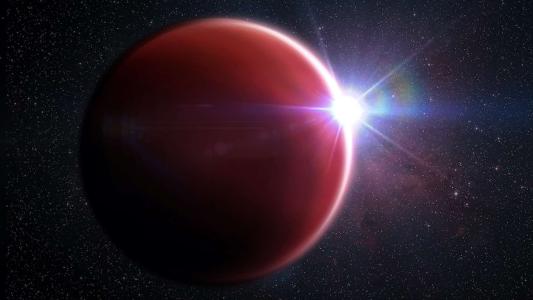Iceland — land of volcanoes and hot springs, ancient magic and cutting edge green energy — has been Earth’s stand-in for Mars for a bit now.
When researchers want to test equipment meant for Mars’s climate and surface, they often turn to Instagram’s favorite island nation. But new research shows Iceland may be an apt analogue for ancient Mars’s climate, as well.
Where The Martian Drones Roam
Iceland’s alien-looking terrain is formed by quickly cooling lava; this basaltic surface, combined with cool temperatures, sandy dunes, and areas of fresh lava fields lacking in vegetation and topsoil, makes it an able stand-in for the Red Planet.
Scientists tested a prototype Mars suit, the M1, by trekking into the Grímsvötn volcano, across the Vatnajökull ice cap, and right up a glacier.
Drone and rover equipment for NASA’s Mars 2020 Mission were tested in Iceland in the fall of 2019. Researchers used models of Martian rovers and drones to do a dry run for the varied conditions the bots will see when Perseverance (and its space-copter companion, Ingenuity) lands this February.
The similarities between contemporary Mars and Iceland may be more than skin deep, according to new research by a team from Rice and Stony Brook universities — it may run all the way back to ancient Mars’s climate.
Rocks of the Ages
To help unlock the secrets of Mars’s past — a time when liquid water, and perhaps even life, could be found on its surface — they compared rock data from the Curiosity rover with the geologic profiles of numerous places on Earth.
Curiosity (which has been roaming Mars’s Gale Crater since 2012) can tell us about the chemical and physical properties of the mudstones, formed by layers of sediment, created when Gale Crater was still a lake.
Unfortunately, it can’t tell us what the climate was like while the sediment was flowing.
For that, the team looked to Earth for analogues.
Published in JGR Planets, the study took samples from multiple locations around the globe — from Iceland to Idaho, Hawaii to Antarctica.
By scouting various locations on Earth for conditions most similar to the ones in Gale, the researchers could glean insights into Mars’s climate at the time of the rocks’ creation.
“Earth provided an excellent laboratory for us in this study, where we could use a range of locations to see the effects of different climate variables on weathering, and average annual temperature had the strongest effect for the types of rocks in Gale Crater,” Rice Martian geologist (what a job title!) Kirsten Siebach said in the university’s release.
Nice Vacation Spot, Very Instagram-able
So, was ancient Mars’s climate hot and wet, or cold and glacial? The researchers found the answer likely isn’t in the extremes.
“Sedimentary rocks in Gale Crater instead detail a climate that likely falls in between these two scenarios,” Michael Thorpe, a Mars sample return scientist at Jacobs Space Exploration Group, said in the release.
The sand and mud found on Mars were closest to those found in Iceland today, suggesting that Iceland — cold and dry, but warm enough to support liquid water — was likely similar to ancient Mars’s climate at the time the rocks were formed.
Because many of the minerals that would usually be washed away first were still present in the Mars rocks, it suggests the Red Planet went from a period of more severe cold to one closer to the Icelandic climes today.
“This really limits the average annual temperature on Mars when the lake was present, because if it were warmer, then more of those elements would have been flushed away,” Siebach said.
We’d love to hear from you! If you have a comment about this article or if you have a tip for a future Freethink story, please email us at [email protected]






